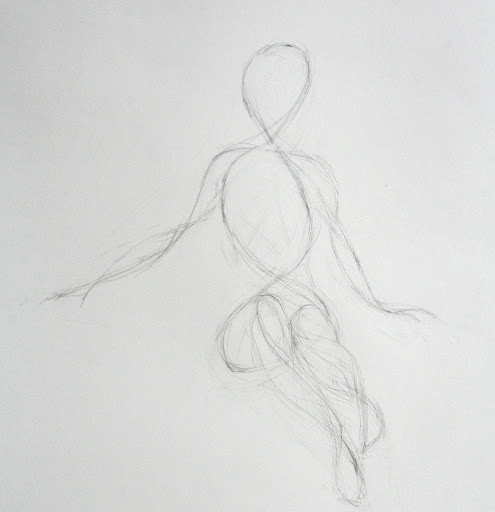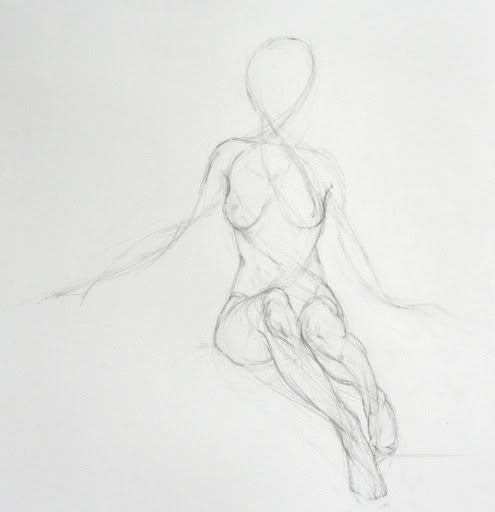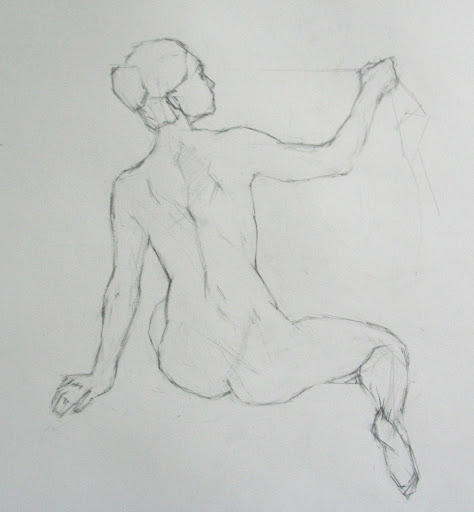 Afternoon Pose, pencil on paper
Afternoon Pose, pencil on paper
I'm practicing drawings based on the "inner movement curve" method in my class at Studio Escalier, and today I really felt something click.
This drawing feels more solid, more believable than my previous drawings. I feel like I am suddenly seeing the relationships between all the parts as a whole, and feeling the three dimensionality of the pose. It has everything to do with what I studied with Ted Seth Jacobs, but Tim Stotz's emphasis on movement is making Ted's teachings come together for me. (Tim was a student of Ted's, so no wonder).
The drawing above started with this drawing of the interior lines of movement:
The first gesture lines aren't much to look at. In fact they look somewhat random and loosey-goosey. But it's actually quite precise. They correspond to very specific points I see on the body - and more importantly, the relationship between those points.
Next I started fleshing out the drawing, starting with the legs and drawing more and more inner movement curves to create the full line drawing. The outside curve of the knee has everything to do with the interior angle of the ankle. Everything wraps around and appears again in a logical place.
Once I started seeing all the relationships it became like a treasure hunt to find more. They are everywhere, all the way out to the fingertips and I am sure down to the tiniest tissue structures.In contrast, this is the drawing I did in the morning, when I was really struggling with the concept. I think you can see it does not have the same energy as the afternoon drawing.
Studio Escalier has arranged several evenings for us to draw at the Louvre from the sculpture gallery. Tonight was the first night, and it was incredibly exciting to see all the sculptures so powerfully describing the same concepts we have been studying.
This is my drawing of a 30-inch marble sculpture by Dumont, done in 1712. It was in a room full of similar small-scale sculptures, which Tim explained were the final thesis projects which students of the 18th century French sculpture academy had to submit in order to graduate and go on to be professional sculptors. These small works represent the pinnacle of the art of figurative sculpture.
 The figure has a clenched fist thrust directly at me... I don't know why I choose such a difficult view. But it made me interested to do more hand studies.
The figure has a clenched fist thrust directly at me... I don't know why I choose such a difficult view. But it made me interested to do more hand studies.
By the way, the Louvre website is amazing. I just found out you can browse the entire collection, room by room. I found the room we were drawing in today here.


